Abstract
Objective
Methods
Notes
REFERENCES
Figure 1
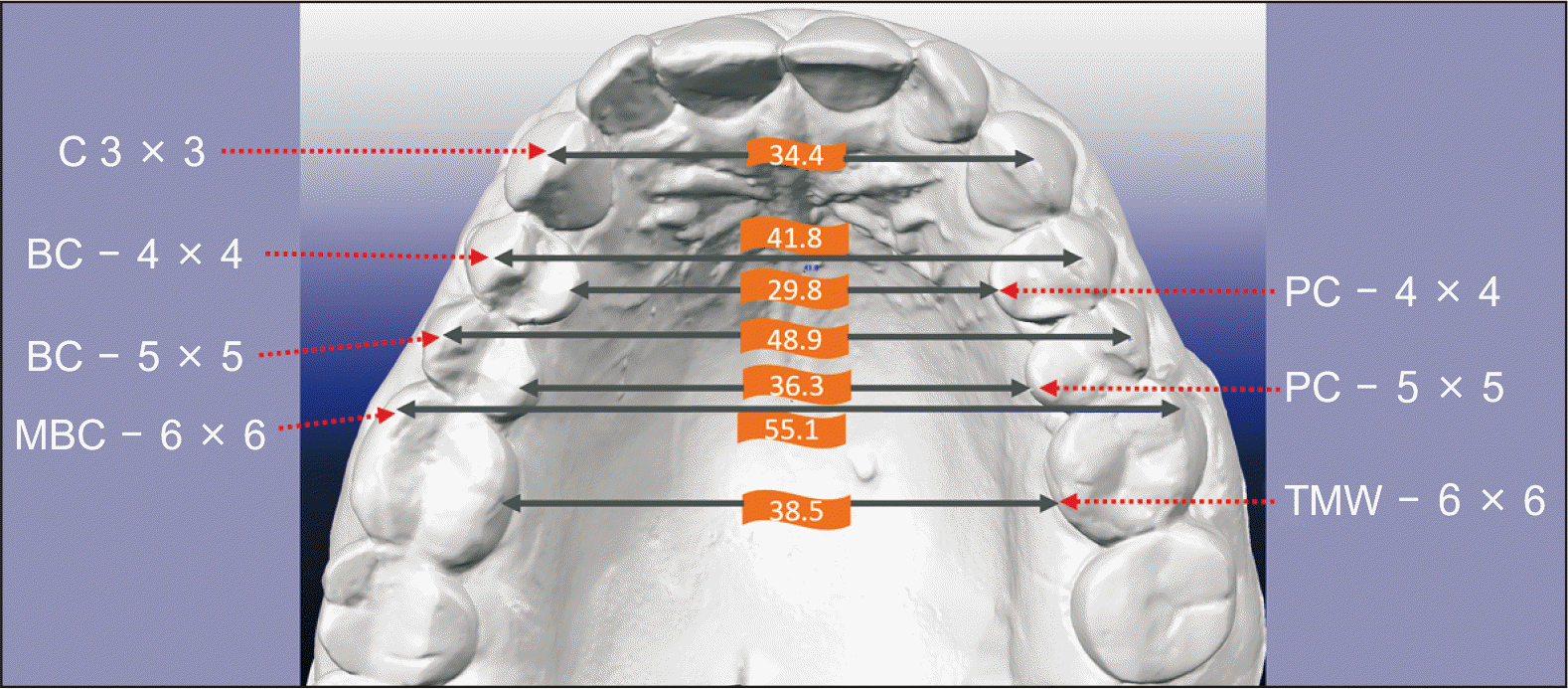
Figure 2
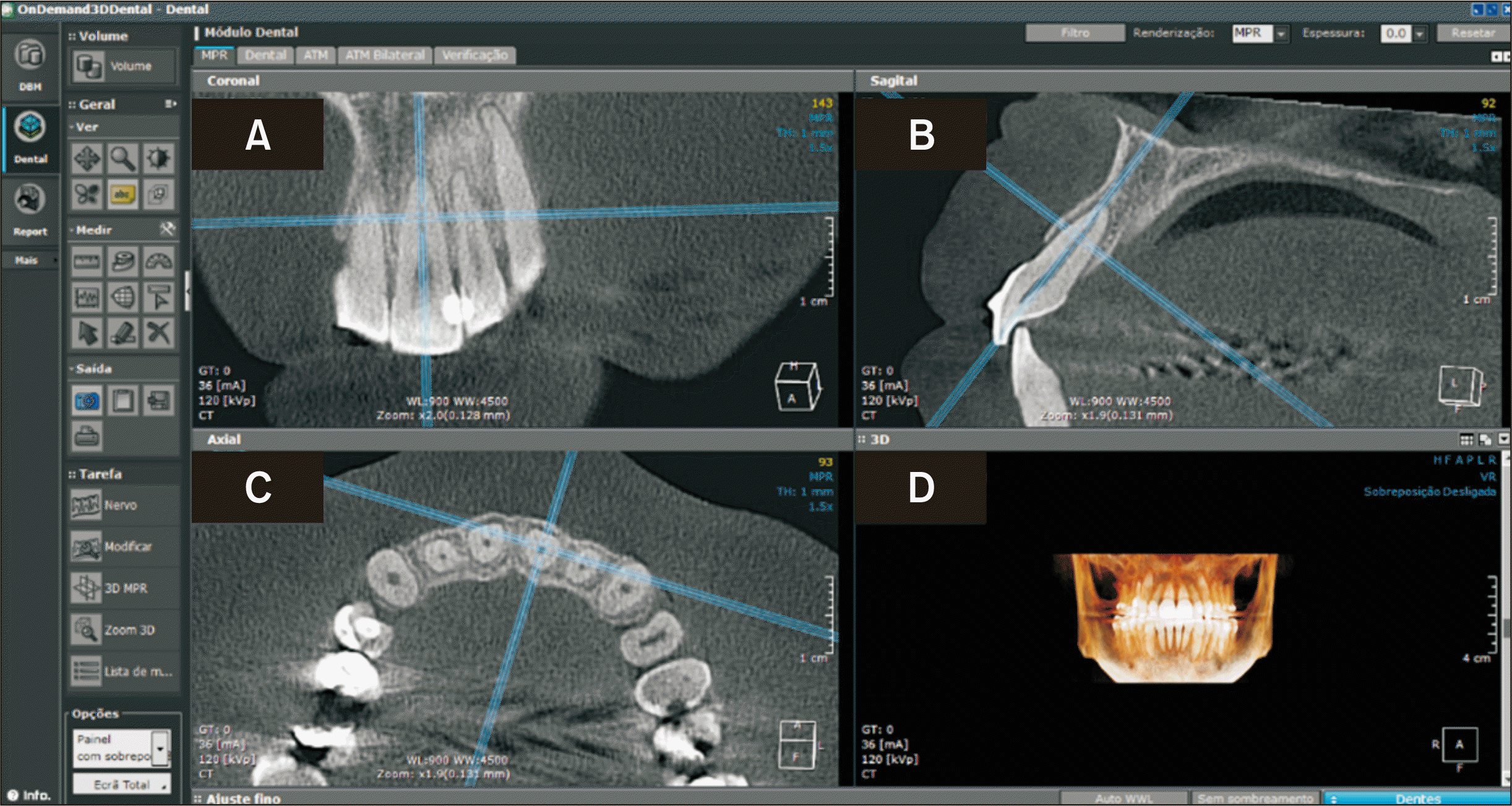
Figure 4
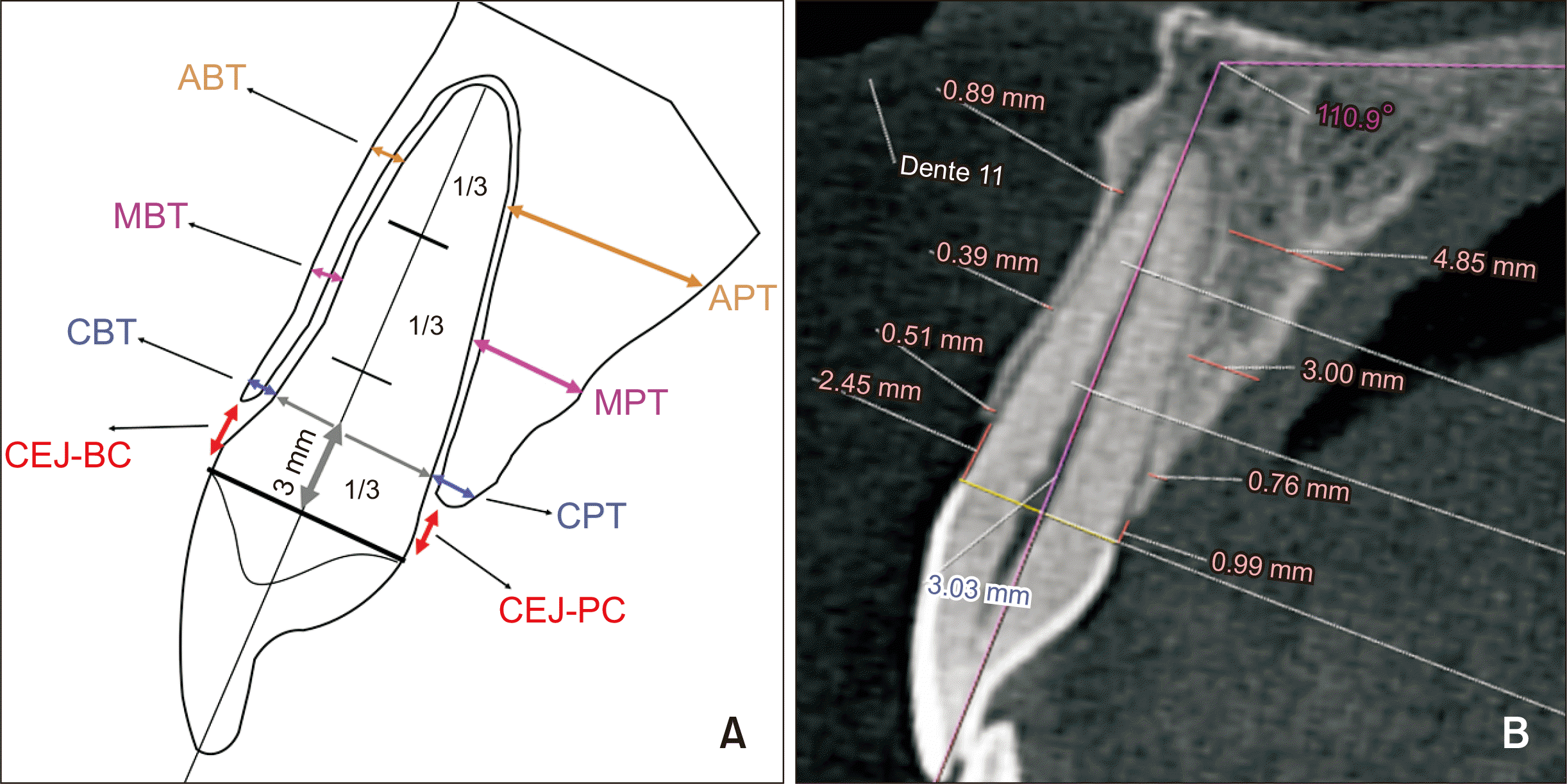
Figure 6
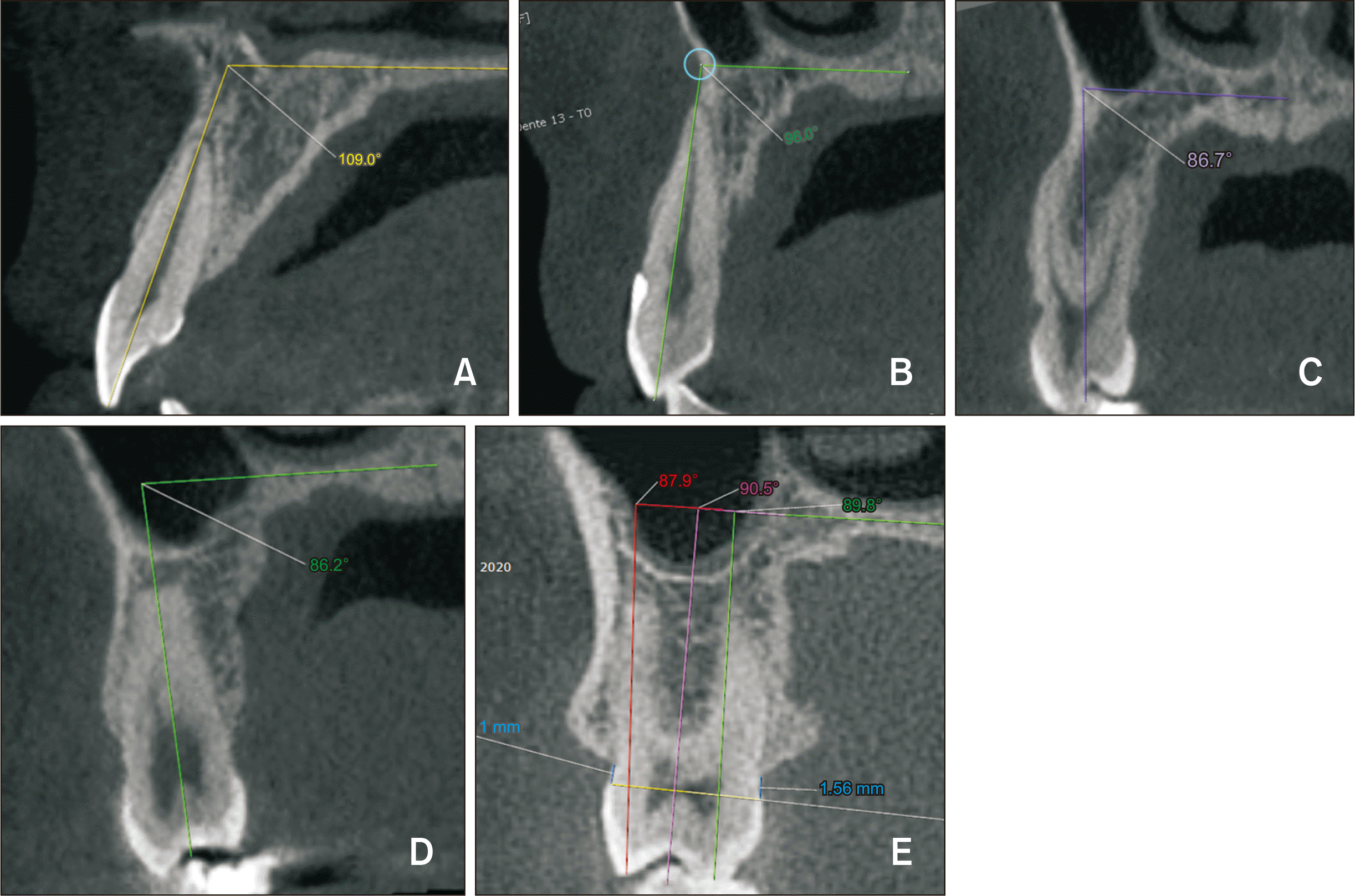
Table 1
C 3 × 3, the most buccal point of the cusp of the canines; BC 4 × 4, linear measurement of the most buccal points of teeth #14 to #24; PC 4 × 4, linear measurement of the most palatal point of the palatal cusps of teeth #14 to #24; BC 5 × 5, linear measurement of the most buccal point of the buccal cusps of teeth #15 to #25; PC 5 × 5, linear measurement of the most palatal point of the palatal cusps of teeth #15 to #25; MBC 6 × 6, linear measurement of the most buccal point of the linear mesio-buccal cusp of teeth #16 to # 26; TMW 6 × 6, linear measurement of the intersection between palatal sulcus and gingival margin of teeth #16 to #26.
Table 2
| Variable | Time | Central incisors | Lateral incisors | Canines | First premolars | Second premolars | First molars |
|---|---|---|---|---|---|---|---|
| Buccogingival region | |||||||
| CEJ-BC (mm) | T0 | 2.58 ± 1.26 | 3.56 ± 2.70 | 4.97 ± 4.18 | 4.85 ± 3.22 | 3.08 ± 2.10 | 3.89 ± 2.85 |
| T1 | 2.80 ± 1.84 | 3.99 ± 3.32 | 4.80 ± 4.13 | 4.52 ± 2.90 | 2.62 ± 1.39 | 3.58 ± 2.60 | |
| CBT (mm) | T0 | 0.42 ± 0.41 | 0.29 ± 0.37 | 0.22 ± 0.34 | 0.18 ± 0.35 | 0.69 ± 0.78 | 0.49 ± 0.66 |
| T1 | 0.42 ± 0.50 | 0.35 ± 0.48 | 0.22 ± 0.36 | 0.16 ± 0.29 | 0.60 ± 0.64 | 0.47 ± 0.62 | |
| Palatocervical region | |||||||
| CEJ-PC (mm) | T0 | 1.82 ± 0.95 | 1.93 ± 1.32 | 2.67 ± 1.67 | 2.69 ± 1.27 | 2.29 ± 1.06 | 2.70 ± 1.19 |
| T1 | 2.46* ± 1.13 | 1.91 ± 1.03 | 2.25 ± 1.16 | 2.45* ± 1.15 | 1.86* ± 0.90 | 2.22* ± 0.87 | |
| CPT (mm) | T0 | 0.71 ± 0.48 | 0.29 ± 0.62 | 0.44 ± 0.40 | 0.36 ± 0.30 | 0.58 ± 0.49 | 0.61 ± 0.69 |
| T1 | 0.47* ± 0.38 | 0.35 ± 0.53 | 0.54 ± 0.42 | 0.54* ± 0.49 | 0.85* ± 0.54 | 0.90* ± 0.81 |
CEJ-BC, distance between the cementoenamel junction and buccal bone crest; CBT, bone tissue present in the buccal face (cervical region) at a distance of 3.0 mm from the CEJ; CEJ-PC, distance between cementoenamel junction and palatal bone crest; CPT, bone tissue present in the palatal face (cervical region) at a distance of 3.0 mm from the CEJ.
Table 3
| Variable | Time | Central incisors | Lateral incisors | Canines | First premolars | Second premolars | First molars |
|---|---|---|---|---|---|---|---|
| Middle buccal region | |||||||
| MBT (mm) | T0 | 0.63 ± 0.40 | 0.56 ± 0.48 | 0.42 ± 0.39 | 0.45 ± 0.47 | 1.04 ± 0.98 | 0.46 ± 0.64 |
| T1 | 0.85* ± 0.51 | 0.66* ± 0.58 | 0.46* ± 0.35 | 0.34* ± 0.26 | 0.76* ± 0.56 | 0.30* ± 0.46 | |
| Middle palatal region | |||||||
| MPT (mm) | T0 | 2.05 ± 0.85 | 1.56 ± 0.92 | 2.25 ± 1.07 | 1.49 ± 0.83 | 2.23 ± 1.07 | 0.99 ± 0.62 |
| T1 | 1.61* ± 0.75 | 1.53 ± 0.97 | 2.13 ± 0.82 | 1.62 ± 0.69 | 2.27 ± 0.99 | 1.25* ± 0.91 |
Table 4
| Variable | Time | Central incisors | Lateral incisors | Canines | First premolars | Second premolars | First molars |
|---|---|---|---|---|---|---|---|
| Apical buccal region | |||||||
| ABT (mm) | T0 | 0.62 ± 0.42 | 0.48 ± 0.47 | 0.39 ± 0.45 | 0.17 ± 0.27 | 0.86 ± 0.71 | 0.69 ± 0.82 |
| T1 | 1.06* ± 0.71 | 0.73* ± 0.65 | 0.65* ± 0.53 | 0.28* ± 0.32 | 1.00* ± 0.73 | 0.76 ± 0.77 | |
| Apical palatal region | |||||||
| APT (mm) | T0 | 4.05 ± 1.53 | 3.40 ± 1.44 | 6.10 ± 2.84 | 3.60 ± 2.05 | 4.28 ± 2.27 | 1.25 ± 0.88 |
| T1 | 3.97 ± 1.67 | 3.30 ± 1.68 | 5.30 ± 2.40 | 3.32 ± 1.66 | 4.11 ± 2.18 | 1.41 ± 0.84 |




 PDF
PDF Citation
Citation Print
Print



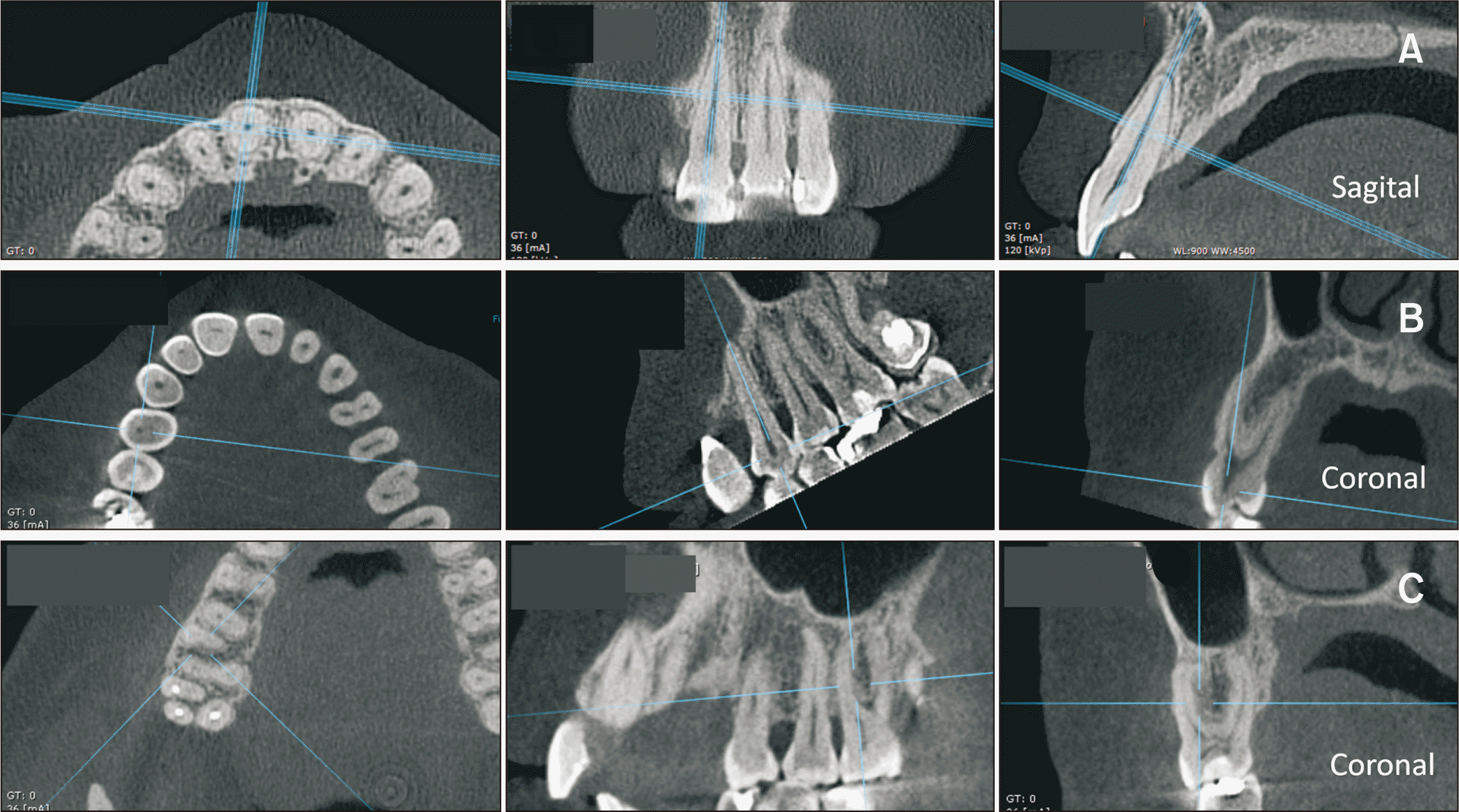
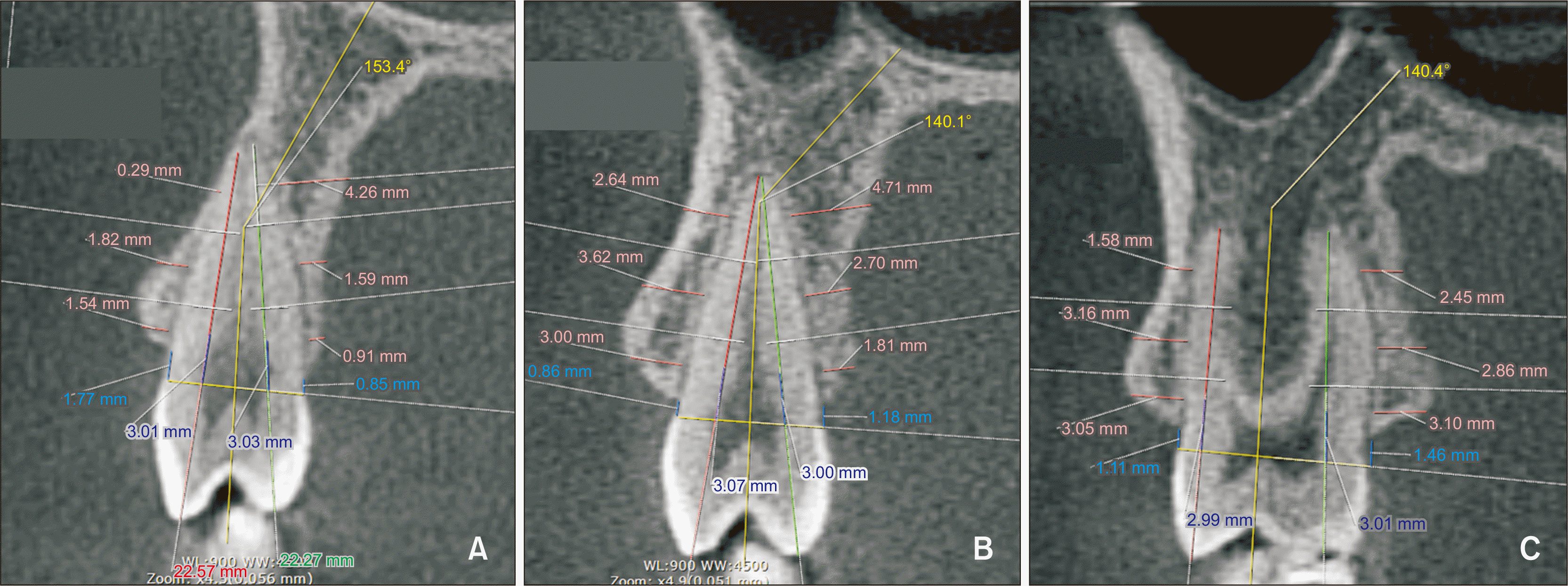
 XML Download
XML Download